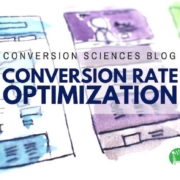Four Ways of Predicting the Future of Your Website
How predictable are people when they are on the Web? As it turns out, they are not very predictable at all. For any site, the audience is very different, even among sites in the same business.
Whenever we try to predict how people will behave, we are trying to predict the future. This is how we forecast outcomes and the potential revenue behind an idea or campaign. As a result, it’s vital to understand how this is done.
Here are four ways we tend to do this on the Web. (Note: not all of them are recommended!)
1. “What worked for others will work for us in the future.”
Predicting the future based on what your competitors is doing is like painting a room to match your neighbor’s furniture. Your site is different. Your audience is different.
And what others are doing may not be working for them. They may be just copying someone else.
There was a time when everyone used rotating images on their homepages. In our tests, we found that rotating header images rarely beat static images.
We see that all the time. A tactics that works for one website becomes a trend. Everyone follows without testing its effectiveness for their audience and their website.
2. “What I like is what everyone will like.”
Most of our sites suffer from what we call “selling to ourselves.” The major problem with this approach is that everyone on your team is a different self. The designer designs for herself, the writer writes for himself, and the marketing exec approves what they themselves approve of. The site will speak with many different voices, both visually and textually.
This approach only predicts the future for visitors who are like the members of this team, who have the skillsets that the members of this team take for granted.
3. “What we have today will continue to work for us.”
While things can change, this is one of the more reliable ways to predict the future. We say that, based on past experience and data, we can predict what will happen tomorrow.
This method predicts the status quo, but does not properly incorporate sales growth into the future vision.
4. “We must experiment to see what will work in the future.”
When we treat every idea as a hypothesis, we are able to ask much more specific questions about the future. Experimentation allows us to see the future in high definition.
When we say, for example, “Our competitors are using video, therefore we should use video,” we are stating a hypothesis.
When we test this hypothesis, we are finding out if our statement predicts the future. Then we can say, “Our test shows that video led more visitors to buy, so we can assume in the future that video will generate more sales.”
Likewise, saying, “I don’t like watching videos when I shop online, so visitors will not like video on our site,” can also be stated as a hypothesis, though the opposite of the one we stated above.
If we had already tested video, we would be able to predict if visitors like video or not based on the sales generated. We don’t need to guess because we have gained the ability to predict the future.
A Unified Fortune Telling Technology
Only the fourth option relies on the scientific process. With this approach, every idea becomes a hypothesis to be tested, and it becomes possible to tell the future with more accuracy.
We always test from where we are today, adding our hypothesis to the mix and testing it against the page as it is.
It makes sense to consider what others are doing and our personal taste when coming up with ideas. It is when we put those ideas in the context of the existing site and test them that we gain a future-seeing goggles.
Full funnel conversion optimization – or the Conversion Sciences Profit Funnel™ – provides the analysis and insights to help you prepare for the future and positively impact your business bottom line.













